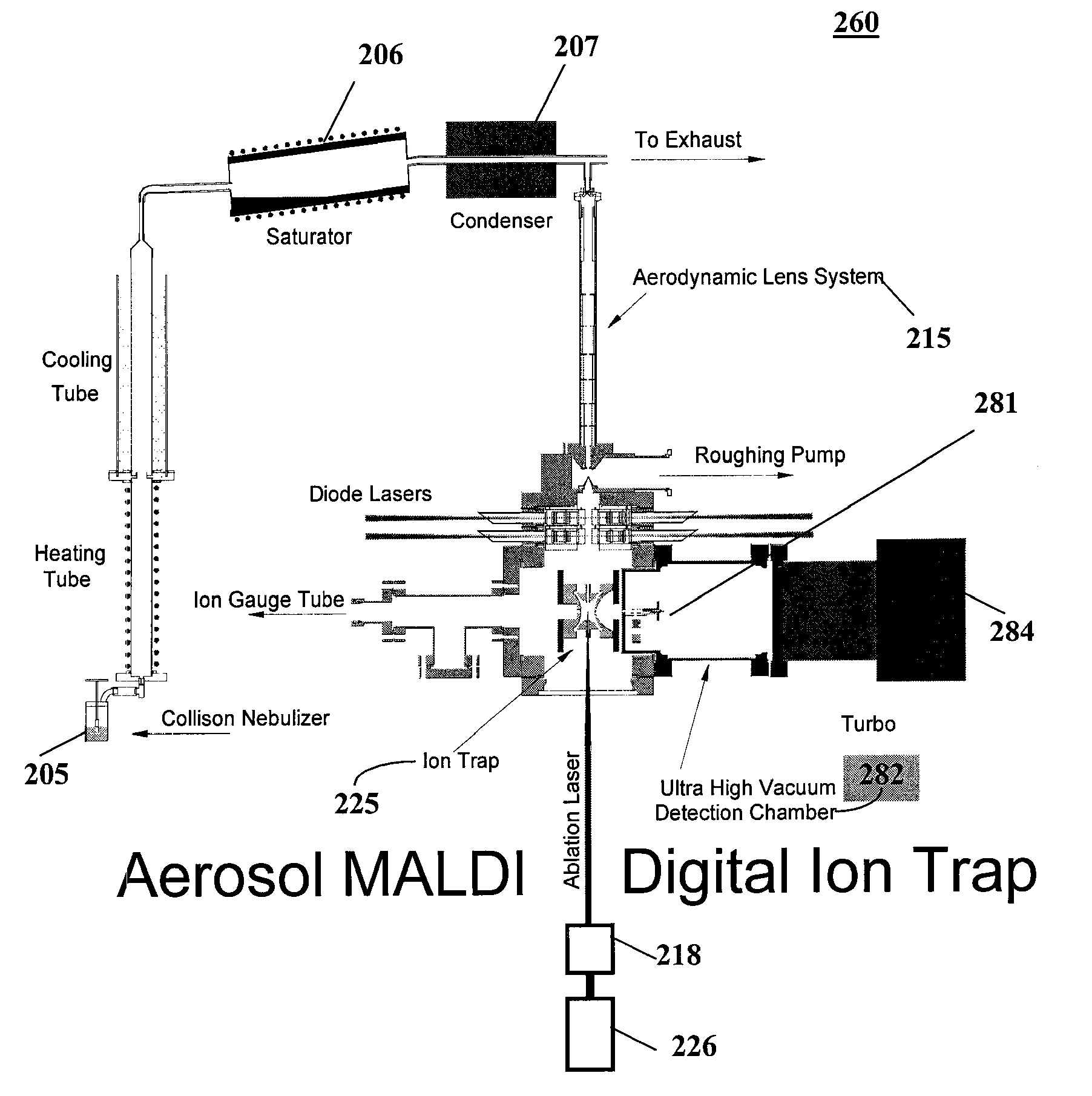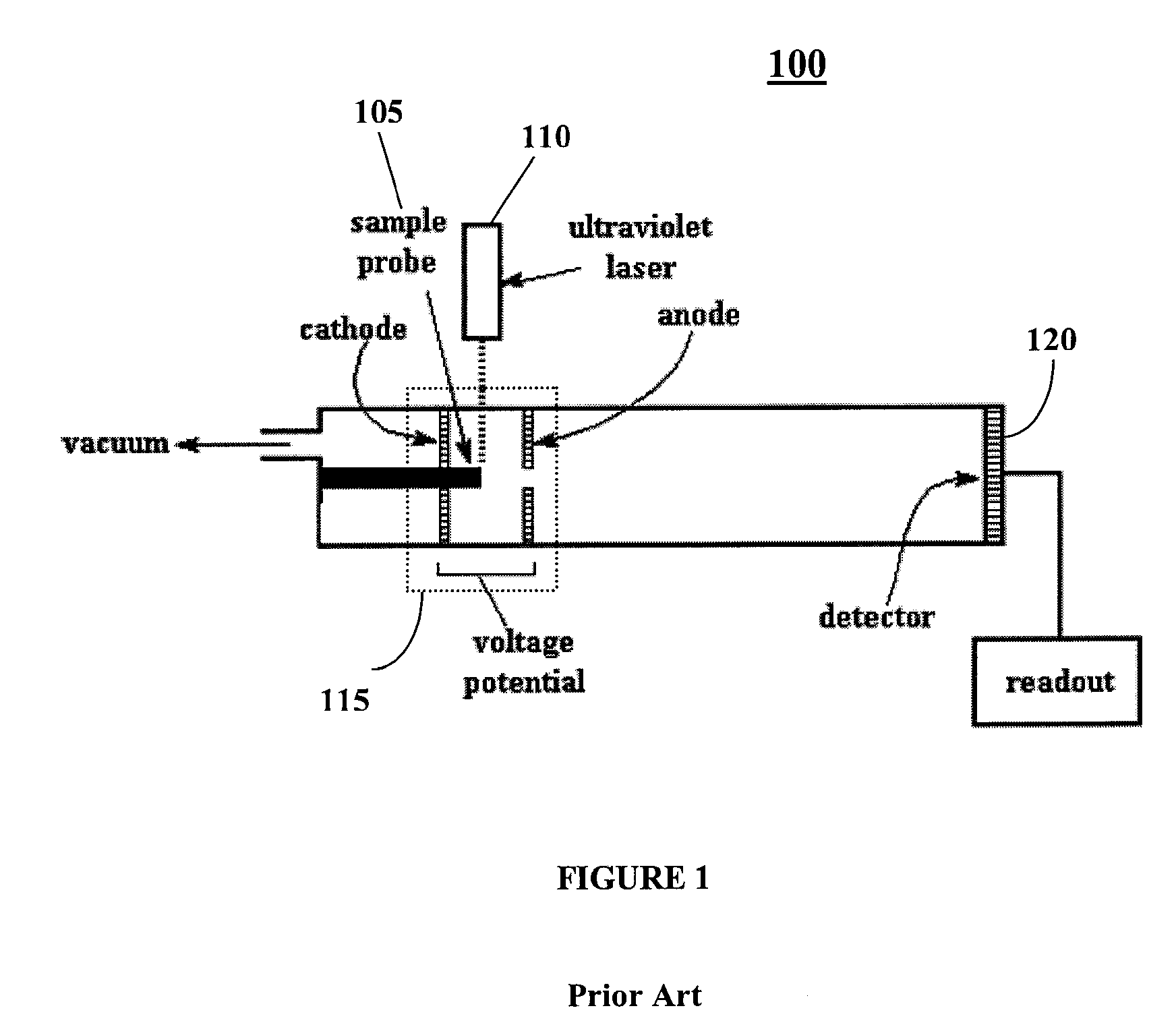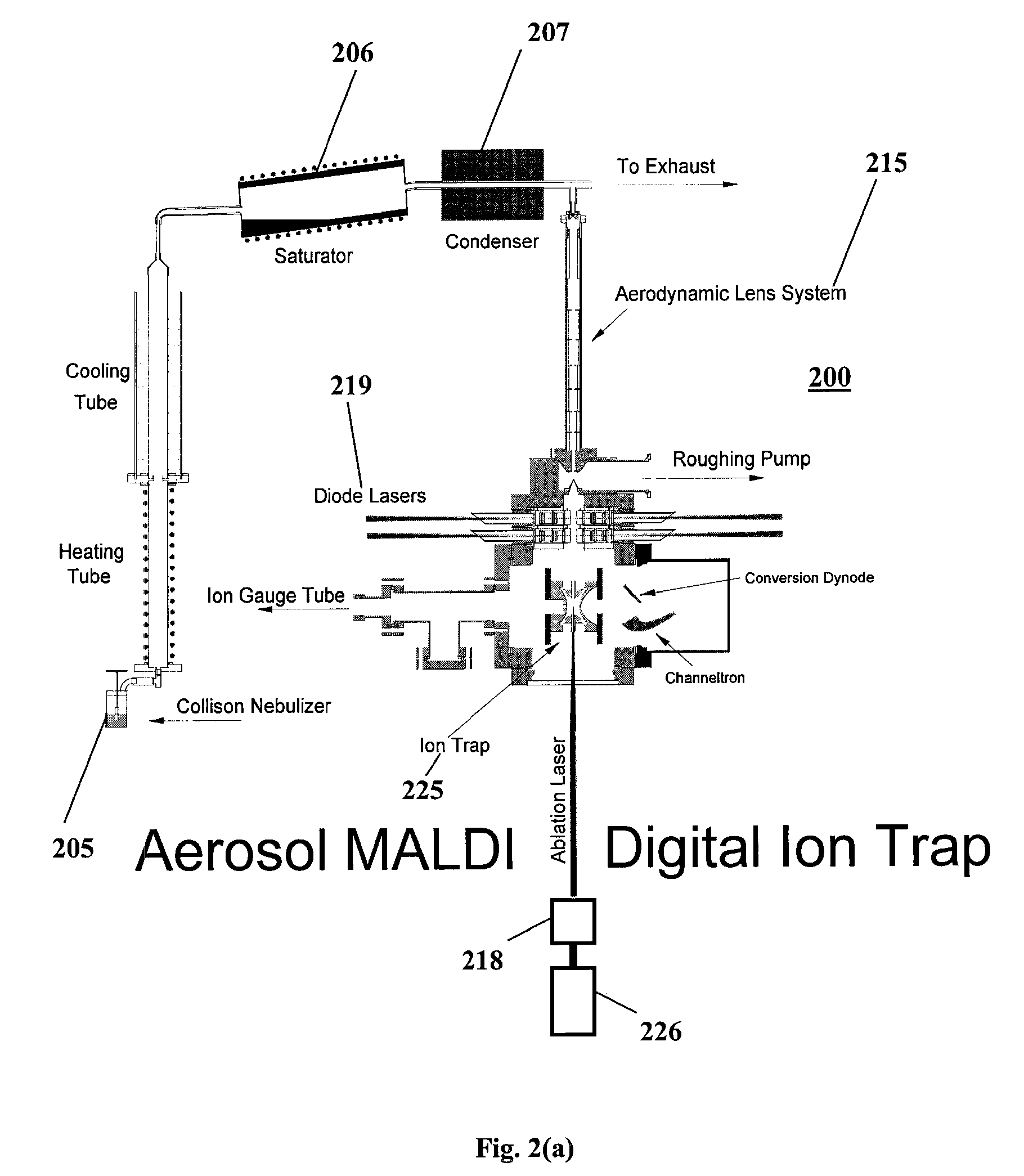High resolution mass spectrometry method and system for analysis of whole proteins and other large molecules
a mass spectrometry and protein technology, applied in the field of chemical analysis, can solve the problems of inability to perform mass spectrometry, inability to remove the enormous amount of kinetic energy, and inability to physically work in the high or ultra high mass range of most mass analyzers
- Summary
- Abstract
- Description
- Claims
- Application Information
AI Technical Summary
Benefits of technology
Problems solved by technology
Method used
Image
Examples
Embodiment Construction
[0021]FIG. 1 shows a simplified schematic illustration of a conventional MALDI TOF mass spectrometer 100. Spectrometer 100 includes a sample probe / plate 105. As well known in the art, MALDI is performed by mixing the analyte solution with a matrix solution, spotting a microliter of the mixture on the probe / sample plate 105, and allowing the solvent(s) to evaporate. The residue left behind contains analyte molecules imbedded within the (solid) matrix. The matrix enhances the desorption and ionization of sample molecules when the residue is irradiated with a laser beam from a pulsed laser 110, such as a uv laser operating at 337 nm. Spectrometer 100 includes an acceleration region 115, comprising two electrodes labeled anode and cathode only for convenience. The acceleration electrodes operate with DC potentials.
[0022]The sample plate 105 is within acceleration region 115. The UV laser 110 is aligned to irradiate sample plate 105 to provide sample molecular ions for analysis which are...
PUM
 Login to View More
Login to View More Abstract
Description
Claims
Application Information
 Login to View More
Login to View More - R&D
- Intellectual Property
- Life Sciences
- Materials
- Tech Scout
- Unparalleled Data Quality
- Higher Quality Content
- 60% Fewer Hallucinations
Browse by: Latest US Patents, China's latest patents, Technical Efficacy Thesaurus, Application Domain, Technology Topic, Popular Technical Reports.
© 2025 PatSnap. All rights reserved.Legal|Privacy policy|Modern Slavery Act Transparency Statement|Sitemap|About US| Contact US: help@patsnap.com



